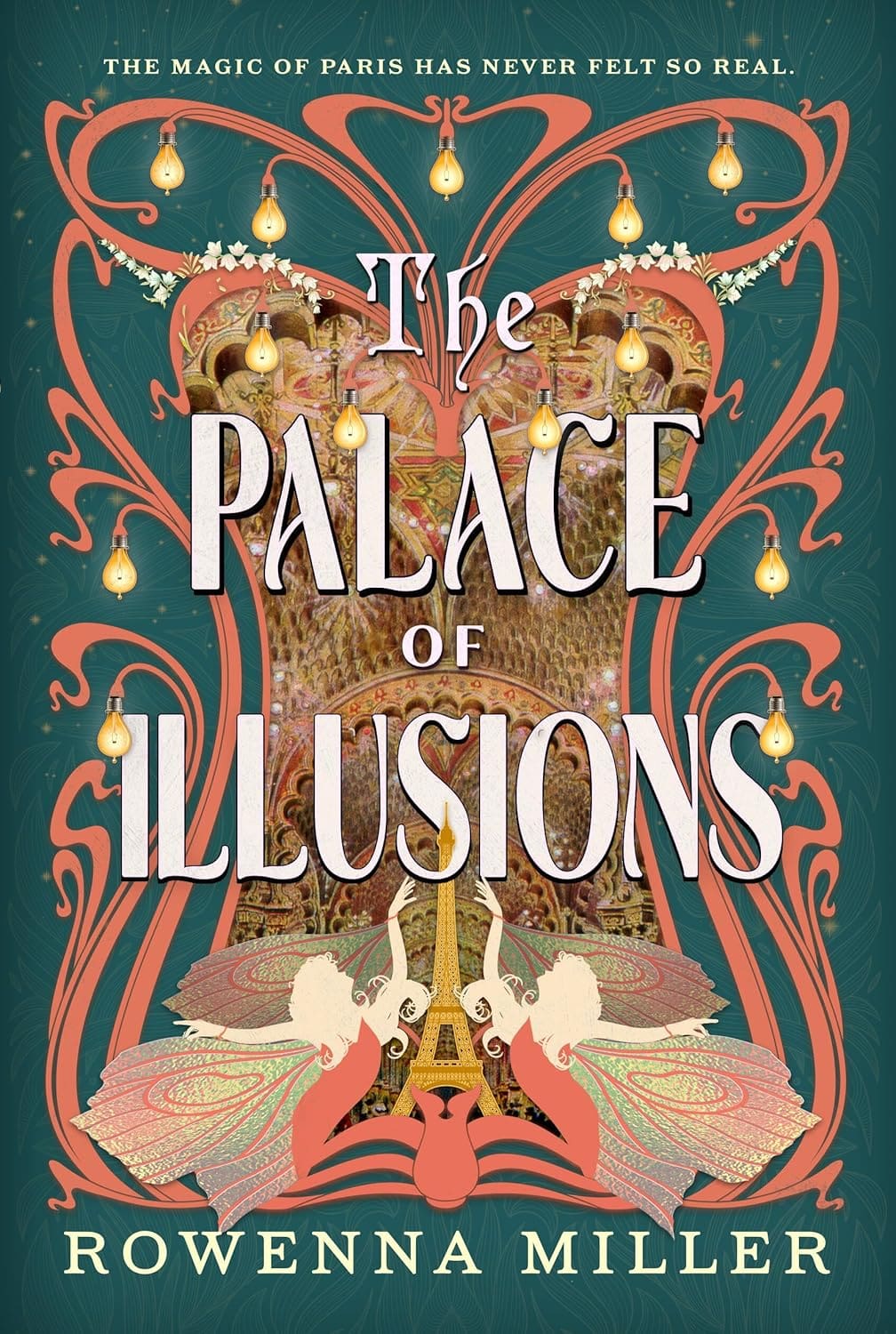
TL;DR Review: Slow in pace but rich in wonder. A quirky character you’ll enjoy following as she discovers the world of magic is real—and there is a threat only she can stop.
Synopsis:
The Palace of Illusions brings readers to a Paris breathless with excitement at the dawn of the twentieth century, where for a select few there is a second, secret Paris where the magic of the City of Light is very real in this enchanting and atmospheric fantasy from the author of The Fairy Bargains of Prospect Hill.
In the run up to the 1900s World’s Fair Paris is abuzz with creative energy and innovation. Audiences are spellbound by the Lumiere brothers’ moving pictures and Loie Fuller’s serpentine dance fusing art and technology. But for Clara Ironwood, a talented and pragmatic clockworker, nothing compares to the magic of her godfather’s mechanical creations, and she’d rather spend her days working on the Palace of Illusions, an intricate hall of mirrors that is one of the centerpieces of the world’s fair.
When her godfather sends Clara a hideous nutcracker for Christmas, she is puzzled until she finds a hidden compartment that unlocks a mirror-world Paris where the Seine is musical, fountains spout lemonade, and mechanical ballerinas move with human grace. The magic of her godfather’s toys was real.
As Clara explores this other Paris and begins to imbue her own creations with its magic, she soon discovers a darker side to innovation. Suspicious men begin to approach her outside of work, and she could swear a shadow is following her. There’s no ignoring the danger she’s in, but Clara doesn’t know who to trust. The magic of the two Parises are colliding and Clara must find the strength within herself to save them both.
Full Review:
Take a stroll into a magical Paris, where the lights and glamor of the early 1900s hides a much subtler sort of magic, one brought to life by imagination and creativity.
In The Palace of Illusions, we join Clara Ironwood, genius clockmaker extraordinaire, as she discovers the afterweld, a reality that is a mirror to our own, but where anything you imagine can be brought to life. The more powerful your innate creativity, the more marvelous the things you can create from living, breathing materials. Here, fountains bubble with the best lemonade in the world, houses are made from marzipan and nougat, and clockwork ballerinas dance with a skill to rival the greatest danseusesof the time.
From the beginning, Clara’s intelligence is on full display. She is a fully analytical thinker, and there is no problem she cannot solve with sufficient time and testing. She’s a no-nonsense, work-minded young woman who has neither the time nor desire for anything beyond the clockwork puzzles she is solving to help create the cutting-edge displays of the 1900s World’s Fair Paris.
Inevitably, her world is thrown into chaos when a gift from her Godfather sends her traveling through the looking glass (quite literally) and into this magical world beneath our own. There, we begin to see a different side of her, a part that can set aside the analytical mind to find wonder in the marvels she witnesses. Though she still approaches figuring it out with her usual logic-driven, solution-oriented methods, she retains enough of her childish love of her Godfather’s fairy tales to want to allow the magic to be real, and so it is.
The story takes a lot of time exploring the whys, hows, and wherefores of this magical world, and it often gets a bit bogged down in Clara’s efforts to decode this mystery. But there’s a lovely fraught dynamic with her sister, making a new friend, finding romance, and building magic-powered marvels that make it an enjoyable read.
It’s a slow-paced yet wonder-filled story that will tap into your nostalgia for fairy tales like the works of Hans Christian Anderson or Beatrix Potter, but all dressed up in the glitz and glamor of a Paris newly discovering electricity.







Leave a Reply